Instance Boxes
An instance can be materialized out of any output of a factory box, provided this output can return an instance or a list. Creating an instance box is especially significant when done from the "self" outlet of a factory box, which returns the object itself .
There are two types of instance boxes :
- class instances, which are created from objects,
- list instances, which are created from lists.
Procedure
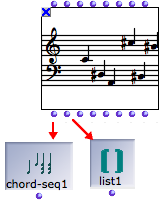 The first ouput of the chord-seq factory box is a chord-seq instance. The second output is a list of pitches. | To create an instance box, The corresponding object will appear in the patch editor. |
The resulting box represents a specific object that cannot be reinitialized, but can be used and evaluated again in a patch. This is why this box shows only one "self" outlet. |  |
 | Instances in OM have a name , which can be edited on the instance box. |
The parametric values of an instance box can't be accessed directly in patches. However, they can be accessed and modified with the slots box.
The content of an instance box can be modified like that a factory box.
Double-click on the instance to open its editor.
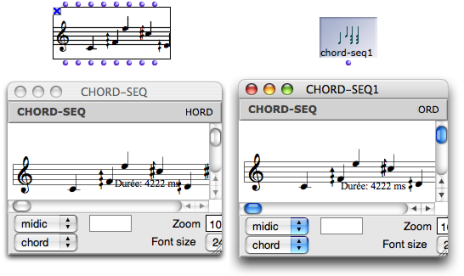
List Instances
List instances are instance boxes containing lists of values instead of a single instance. An instance derived from a list returns its content when evaluated. | 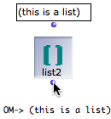 A list can be used for creating an instance box. |
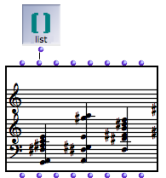 | Just like any list, it can be connected to other boxes to create new objects. |
List instances have a basic editor allowing to get a preview and modify their contents.
Storing/Reusing Instances
Instances are a means to save an object within a patch, where it can then be used as a source of data.
Instances can also be used in other patches :
they can be copied
they can saved as global variables[1], which is sometimes more convenient and/or coherent.
Instances can also be exported and imported as .omi files, to and from any location of your hard drive. The import/export procedure must be done via Factory Boxes.
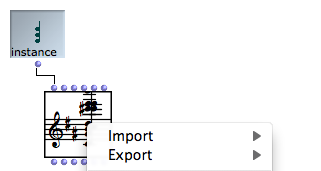
You can drag and drop an instance file in a patch editor to create a new instance box directly.
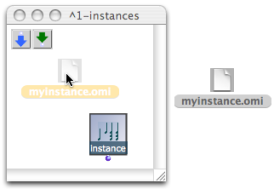
- Global variable
An instance of OM object that has been saved in order to be used in other programs. Global variables are visible from the
Librarywindow and stored as .omi files in theGlobalsfolder of the workspace.
